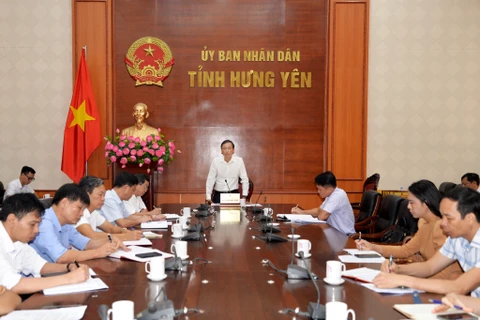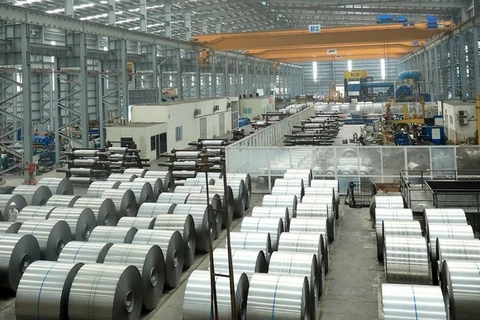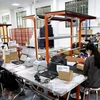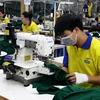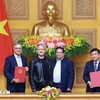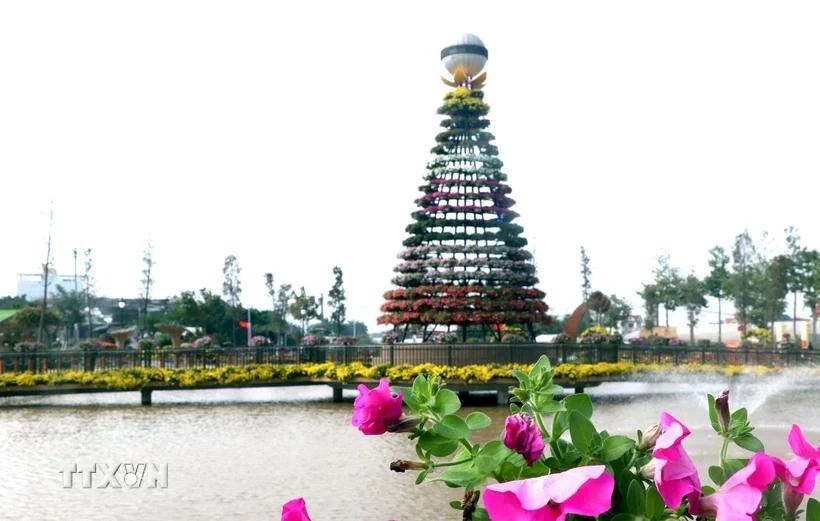
Hung Yen (VNA) – The northern province of Hung Yen has for more than two years implemented a development plan on enhancing the economic efficiency of its riverside areas by 2025, with a vision to 2030, resulting in significant improvement in the local socio-economic landscape.
According to Le Van Thang, Director of the provincial Sub-department for Rural Development, the province's riverside areas comprise 44 communes in Hung Yen city and the districts of Van Giang, Khoai Chau, Kim Dong, Tien Lu, and Phu Cu. In recent years, these communes have seen their infrastructure upgraded, renovated, and constructed, improving the quality of life and production.
Meanwhile, the agricultural economy there has developed significantly, forming large-scale production zones specialising in flowers and ornamental plants, citrus fruit, longan, bananas, livestock and aquaculture, among others. The forms of organising agricultural production in these riverside communes has also evolved, hence the formation of many cooperatives and collaborative groups.
Thang said to achieve the goal of farming development in the riverside lands, localities involved have expanded their concentrated flower and ornamental plant cultivation to over 550 hectares, stabilised their plantations of longan, oranges, and bananas, and promoted the growing herds of buffalos, cows, and poultry. Notably, Van Giang and Khoai Chau districts have leveraged their advantages in agricultural goods production, with income ranging from 300 million VND (1,200 USD) to 500 million VND per hectare, primarily from ornamental plants and fruit trees.
Their efforts have led to the emergence of famous flower and fruit tree villages such as Phung Cong, Me So, and Lien Nghia in Van Giang, as well as Dong Tao, Da Trach, Binh Minh, Ham Tu in Khoai Chau.
Effectively capitalising on the potential of its riverside land along the Red River, Van Giang has grown substantially in recent years, becoming one of the largest flower and ornamental plant hubs in the northern region. Currently, it houses eight craft villages specialising in such farming, engaging over 5,000 households and offering jobs for more than 13,000 workers.
Hung Yen’s riverside economic development plan aims for the average income per capita in the rural riverside areas to reach 70 million VND per year by 2025, with income per hectare of cultivated land reaching between 250 million VND and 300 million VND. The scheme also targets a trained labour rate of 75% and the establishment of specialised flower and ornamental plant production zones in Van Giang and Khoai Chau districts as key production centres in the region. The total investment for carrying out this plan is estimated to exceed 2.1 trillion VND.
Nguyen Hung Nam, Vice Chairman of the provincial People's Committee, stated that to promote the socio-economic development of the riverside areas, Hung Yen will focus on setting up concentrated production areas to gradually form high-tech farming zones, while maximising domestic and foreign capital investment in the development of handicrafts and craft villages.
Additionally, the province is set to focus on developing a comprehensive, modern, and sustainable transport system, ensuring seamless connectivity between different modes of transport and building links among its localities as well as between them and Hanoi. Efforts will be intensified to promote tourism, including cultural sightseeing and experiences. Spiritual tourism is set to be further developed to attract domestic visitors, with weekend tourism linked to ecology, farms, rural agriculture, and recreational activities expanded to diversify local products./.
